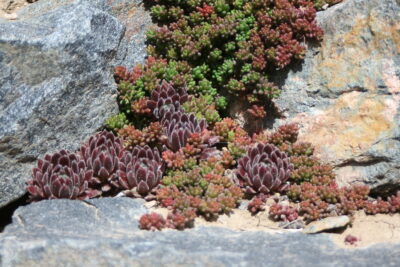
Propagation of Succulents: Cutting Techniques and Methods

Succulents have become increasingly popular in recent years, thanks to their unique and attractive appearance, as well as their low maintenance requirements. These plants, which store water in their leaves and stems, are known for their ability to thrive in arid conditions. However, one of the most fascinating aspects of succulents is their ability to propagate and reproduce through various methods. Understanding the different techniques for propagating succulents can help enthusiasts and gardeners expand their collection and share their love for these plants with others.
We will explore the various cutting techniques and methods for propagating succulents. We will discuss the importance of selecting the right cutting, the necessary tools and materials, and the step-by-step process for successful propagation. Additionally, we will delve into the different factors that can influence the success of propagation, such as timing, temperature, and humidity. Whether you are a beginner or an experienced succulent enthusiast, this article will provide you with the knowledge and guidance needed to propagate your succulents effectively and ensure their healthy growth.
- Use a sharp, sterilized knife or scissors to make clean cuts on the succulent stem
- Allow the cuttings to dry and callus over for a few days before planting
- Dip the cut end of the succulent cutting in rooting hormone to promote faster root growth
- Plant the cuttings in well-draining soil or a mixture of sand and potting soil
- Keep the soil lightly moist but not overly wet to prevent rotting
- Place the succulent cuttings in a bright location with indirect sunlight
- Mist the cuttings with water occasionally to increase humidity
- Avoid direct sunlight or extreme temperatures, as this can stress the cuttings
- Monitor the cuttings for root growth, which can take a few weeks to a few months
- Once the cuttings have established roots, gradually introduce them to more sunlight
- Transplant the rooted cuttings into individual pots or a succulent garden
- Provide proper care and maintenance, including regular watering and occasional fertilization, to promote healthy growth
- Frequently Asked Questions
Use a sharp, sterilized knife or scissors to make clean cuts on the succulent stem
When propagating succulents, it is essential to use a sharp and sterilized knife or scissors. This ensures that the cuts made on the succulent stem are clean and minimize the risk of introducing any infections or diseases.
Allow the cuttings to dry and callus over for a few days before planting
When propagating succulents through cuttings, it is crucial to let the cut ends dry and callus over before planting them. This process helps to prevent rot and promotes successful rooting.
After taking cuttings from your succulent plant, gently remove any leaves or lower branches from the bottom few inches of the stem. This will ensure that no leaves are buried in the soil, which can lead to rotting.
 Succulent Root Growth: Unveiling Patterns and Depths
Succulent Root Growth: Unveiling Patterns and DepthsOnce you have prepared the cuttings, place them in a dry and shaded area for a few days. This allows the cut ends to callus over, forming a protective layer that helps to prevent moisture loss and potential infections.
During this callusing period, it is essential to keep the cuttings out of direct sunlight and away from excessive humidity. Placing them in a well-ventilated area will aid in the callus formation process.
Note: Different succulent species may have varying callusing times, so it is important to research specific care instructions for the type of succulent you are propagating.
Once the cut ends have callused, you can proceed with planting the cuttings in well-draining soil. The callus will act as a barrier, protecting the cut ends from moisture and potential infections.
To plant the cuttings, create small holes in the soil using your finger or a pencil. Gently insert the cuttings into the holes, ensuring that the callused ends are fully covered with soil. Press the soil lightly around the base of the cuttings to provide stability.
After planting, it is crucial to avoid watering the cuttings immediately. Succulents are highly prone to rotting if exposed to excessive moisture while they are still establishing their roots. Instead, wait for a week or two before providing the first watering.
By allowing the cuttings to dry and callus over before planting, you are giving them the best chance to develop strong roots and thrive as new succulent plants.
 Growing Blue Bean Succulents: A Guide for Home Gardeners
Growing Blue Bean Succulents: A Guide for Home GardenersDip the cut end of the succulent cutting in rooting hormone to promote faster root growth
Propagation of succulents is an exciting and rewarding process that allows you to expand your collection and share your love for these unique plants with others. One of the most common and effective methods of succulent propagation is through cuttings. By taking a healthy cutting from a mature plant and providing it with the right conditions, you can encourage the growth of new roots and eventually establish a whole new succulent.
Rooting Hormone: A Helping Hand for Faster Root Growth
When it comes to succulent cuttings, using rooting hormone can significantly enhance the chances of successful propagation. Rooting hormone is a plant hormone that stimulates root development and promotes faster root growth. It comes in various forms, such as powders, gels, or liquids, and can be easily found at garden centers or online.
Before you start the propagation process, dip the cut end of the succulent cutting into rooting hormone. This will help the cutting develop roots more quickly and increase its chances of survival. Make sure to follow the instructions provided with the rooting hormone product, as the application method may vary depending on the type you choose.
Tip: It's important to note that while rooting hormone can be beneficial, it is not always necessary for succulent propagation. Some succulents, such as those in the genus Sedum, can root easily without the use of rooting hormone. However, if you want to give your cuttings a boost, using rooting hormone is definitely worth considering.
Once you have applied the rooting hormone, you can proceed with the next steps of succulent propagation, such as allowing the cutting to callous over and planting it in well-draining soil. Remember to provide the cutting with the appropriate amount of sunlight and water, as different succulent species have specific requirements.
By utilizing rooting hormone during the propagation process, you can increase the chances of success and enjoy watching your succulent cuttings develop into thriving plants.
 Planting Succulent Cuttings: Skip Rooting Process and See Results
Planting Succulent Cuttings: Skip Rooting Process and See ResultsPlant the cuttings in well-draining soil or a mixture of sand and potting soil
When it comes to propagating succulents, one of the most popular techniques is through cuttings. This method allows you to create new plants from the leaves or stems of existing succulents. However, in order for the cuttings to successfully root and grow, it is crucial to plant them in the right type of soil.
It is recommended to use well-draining soil or a mixture of sand and potting soil for planting succulent cuttings. The reason behind this is that succulents have adapted to survive in arid environments with minimal water availability. Therefore, using a soil mix that allows excess water to drain quickly will prevent the cuttings from sitting in water and potentially rotting.
Well-draining soil for succulent cuttings
A well-draining soil mix for succulent cuttings usually consists of a combination of materials that promote good drainage. One popular option is a mixture of equal parts of regular potting soil and coarse sand. This combination provides the right balance of moisture retention and drainage, allowing the cuttings to establish roots without experiencing excessive moisture.
Another alternative is to use a specialized succulent or cactus potting mix, which is specifically formulated to meet the needs of these plants. These mixes often contain a higher proportion of sand or perlite, which further improves drainage.
Mixing your own soil for succulent cuttings
If you prefer to mix your own soil for succulent cuttings, you can start with a base of regular potting soil and then add materials to enhance drainage. Adding coarse sand, perlite, or pumice to the potting soil can help create a well-draining mix suitable for succulent cuttings.
It is important to note that using garden soil or dense, moisture-retentive potting mixes should be avoided when planting succulent cuttings. These types of soil may hold too much moisture, which can lead to root rot and hinder the establishment of new plants.
 Fast-track Succulent Propagation: Tips for Accelerated Growth
Fast-track Succulent Propagation: Tips for Accelerated GrowthThe importance of proper soil for succulent cuttings
Choosing the right soil for succulent cuttings is crucial for their successful propagation. The well-draining soil allows excess water to escape quickly, preventing the cuttings from becoming waterlogged and potentially rotting. By providing the right conditions, you are giving your succulent cuttings the best chance to root, establish, and grow into healthy plants.
Keep the soil lightly moist but not overly wet to prevent rotting
When it comes to propagating succulents, one of the key factors to keep in mind is maintaining the right level of moisture in the soil. Succulents, being plants that store water in their leaves and stems, have adapted to survive in arid conditions. Therefore, it is crucial to strike a balance between providing enough moisture for the cuttings to root and grow, while also avoiding excessive watering that may lead to rotting.
It is recommended to keep the soil lightly moist during the propagation process. This means watering the cuttings sparingly, ensuring that the soil is damp but not overly wet. Overwatering can cause the cuttings to rot or develop fungal infections, which can hinder their growth and overall health.
To achieve the right level of moisture, it is advisable to water the cuttings only when the top inch of soil feels dry to the touch. This helps prevent any waterlogging and allows for proper root development. Using a well-draining potting mix specifically formulated for succulents can also aid in maintaining the ideal moisture balance.
In addition to proper watering, providing the right growing conditions such as adequate sunlight and ventilation is essential for successful succulent propagation. Placing the cuttings in a well-lit area, preferably near a window with indirect sunlight, encourages healthy growth and minimizes the risk of etiolation. Etiolation is a common problem that occurs when succulents do not receive enough light, resulting in elongated and weak stems.
Remember, each succulent species may have specific requirements, so it's important to research and understand the needs of the particular succulent you are propagating. By following the appropriate cutting techniques and methods, along with providing optimal growing conditions, you can ensure successful propagation and enjoy a thriving succulent collection.
Place the succulent cuttings in a bright location with indirect sunlight
 Propagating Split Rocks Succulents: Can They Be Divided for Growth?
Propagating Split Rocks Succulents: Can They Be Divided for Growth?When propagating succulents through cuttings, it is crucial to provide them with the right lighting conditions. After taking the cuttings, find a bright location where they can receive indirect sunlight. This is important because direct sunlight can cause the cuttings to dry out or burn. Placing them near a sunny window or in a well-lit room is ideal.
Mist the cuttings with water occasionally to increase humidity
If you want to successfully propagate succulents using cutting techniques, it is important to create an environment that promotes healthy root development. One way to do this is by increasing humidity around the cuttings. Mist the cuttings with water occasionally to provide them with the moisture they need to establish roots.
Avoid direct sunlight or extreme temperatures, as this can stress the cuttings
When propagating succulents through cutting techniques, it is important to create a suitable environment for the cuttings to thrive. One of the key factors to consider is the exposure to sunlight and temperature.
Succulents are known for their ability to tolerate harsh conditions, but when it comes to cuttings, they are more delicate and require some extra care. Direct sunlight can be too intense for the newly cut stems, causing them to dry out and even burn. Similarly, extreme temperatures, whether hot or cold, can put unnecessary stress on the cuttings, hindering their ability to root and establish.
To ensure successful propagation, it is recommended to place the cuttings in an area where they receive bright, indirect sunlight. This means finding a spot that allows for filtered light or partial shade. Placing the cuttings near a window that gets morning or evening sun is ideal.
 Step-by-Step Guide: Growing a Beautiful Rose Succulent
Step-by-Step Guide: Growing a Beautiful Rose SucculentAdditionally, it is crucial to avoid exposing the cuttings to extreme temperature fluctuations. Rapid changes in temperature can shock the delicate cuttings, preventing them from rooting and growing. It is advisable to keep the cuttings in a room with a stable temperature, ideally between 65°F to 75°F (18°C to 24°C). This moderate temperature range provides a favorable environment for the cuttings to establish roots and grow into healthy plants.
When propagating succulents through cutting techniques, it is essential to protect the cuttings from direct sunlight and extreme temperatures. By providing the right amount of filtered light and maintaining a stable temperature range, you can give your cuttings the best chance to thrive and grow into beautiful, mature succulent plants.
Monitor the cuttings for root growth, which can take a few weeks to a few months
When propagating succulents through cuttings, it is important to monitor the cuttings for root growth. This process can take anywhere from a few weeks to a few months, depending on the succulent variety and environmental conditions.
Root growth is a crucial step in the propagation process as it indicates that the cutting has successfully established itself and can be potted or transplanted into its own container. To ensure the best chances of root growth, there are several techniques and methods you can employ.
1. Prepare the Cuttings
Before monitoring for root growth, it is essential to properly prepare the cuttings. Start by selecting healthy, mature leaves or stems from the parent succulent. Use a clean, sharp cutting tool to make a clean cut, ensuring that the cutting is at least 2-3 inches long.
Remove any lower leaves or excess foliage, making sure that there are no leaves touching the soil when planted. This helps prevent rot or disease and directs the plant's energy towards root development.
2. Provide Adequate Light and Temperature
Place the cuttings in a bright, indirect light location. Succulents thrive in sunlight, so a well-lit spot will encourage healthy growth and root development. However, direct sunlight can be too intense and may cause the cuttings to dry out or become damaged.
 Easy Guide to Propagating Jelly Bean Succulents at Home
Easy Guide to Propagating Jelly Bean Succulents at HomeMaintain a consistent temperature between 65-75°F (18-24°C) for optimal root growth. Avoid extreme temperature fluctuations, as they can stress the cuttings and hinder their ability to develop roots.
3. Use a Well-Draining Propagation Medium
Choose a well-draining propagation medium specifically formulated for succulents or create your own mix using a combination of perlite, coarse sand, and peat moss. A well-draining medium prevents excess moisture retention, reducing the risk of rot and encouraging root growth.
4. Water Sparingly
When it comes to watering succulent cuttings, less is more. Overwatering can lead to rot and hinder root development. Allow the soil to dry out partially between waterings, ensuring that the roots have access to oxygen and preventing waterlogged conditions.
It is important to note that different succulent varieties have varying water requirements, so it is crucial to research and understand the specific needs of the succulent being propagated.
5. Be Patient and Observe
Propagation takes time, and it requires patience and observation. Regularly check the cuttings for any signs of root growth, such as small white or pinkish nodules emerging from the stem or leaf base.
Keep in mind that not all cuttings will successfully root, and it may take multiple attempts to achieve successful propagation. Be patient, adjust your techniques if needed, and continue monitoring until roots have developed.
By following these techniques and methods for monitoring root growth, you can increase your chances of successful succulent propagation through cuttings. Remember to adapt these guidelines to suit the specific needs of your succulent varieties, and enjoy the rewarding process of growing new plants from cuttings!
 Discover the Succulents with Shallow Root Systems for Easy Care
Discover the Succulents with Shallow Root Systems for Easy CareOnce the cuttings have established roots, gradually introduce them to more sunlight
After successfully propagating your succulent cuttings and seeing the roots develop, it's important to gradually expose them to more sunlight. While succulents are known for their ability to thrive in bright light, sudden exposure to intense sunlight can potentially damage or burn the fragile new roots.
Start by placing the cuttings in a location with indirect sunlight or partial shade, such as a windowsill with a sheer curtain or under a lightly shaded area outdoors. This will allow the plants to acclimate to the intensity of the sun gradually.
Over the course of a week or two, slowly increase the amount of direct sunlight the cuttings receive. You can achieve this by gradually removing the sheer curtain or moving them to a spot with more direct sunlight for a few hours each day. Observe how the plants respond and adjust accordingly.
It's important to note that different succulent varieties have varying light requirements. Some may prefer more shade, while others thrive in full sun. Research the specific needs of the succulent species you are propagating and adjust the light exposure accordingly.
Remember to keep an eye on the cuttings during this transition period. Signs of too much sunlight exposure include yellowing, browning, or wilting leaves. If you notice these symptoms, immediately move the cuttings to a shadier location and gradually reintroduce them to sunlight once they have recovered.
By gradually introducing your succulent cuttings to more sunlight, you are giving them the best chance to thrive and grow into healthy, mature plants.
 Can You Propagate Succulents by Cutting and Replanting the Cuttings?
Can You Propagate Succulents by Cutting and Replanting the Cuttings?Transplant the rooted cuttings into individual pots or a succulent garden
Transplant the rooted cuttings into individual pots or a succulent garden
Once your succulent cuttings have successfully rooted, it's time to transplant them into their own pots or into a succulent garden. This step is crucial to ensure the proper growth and development of your new plants.
Here are some techniques and methods to follow when transplanting your rooted succulent cuttings:
1. Choose the right pot or container
When selecting a pot for your succulent cuttings, it's important to choose one that has drainage holes. Succulents dislike sitting in waterlogged soil, so proper drainage is essential. Opt for a pot with a size appropriate for the size of the cutting, leaving some room for growth.
2. Prepare the potting mix
For succulents, it's best to use a well-draining potting mix. You can either purchase a pre-made succulent mix or create your own by combining equal parts of regular potting soil, perlite, and coarse sand. This mix allows for adequate drainage and prevents water retention.
3. Gently remove the rooted cutting
Carefully loosen the soil around the rooted cutting, taking care not to damage the delicate roots. You can use a small trowel or your fingers to gently lift the cutting out of the rooting medium.
 Can Succulents Develop New Roots from Their Stems?
Can Succulents Develop New Roots from Their Stems?4. Plant the cutting in the new container
Make a small hole in the potting mix and place the rooted cutting into it. Ensure that the roots are spread out and not cramped together. Gently press the soil around the cutting to secure it in place.
5. Allow the cutting to acclimate
After transplanting, it's important to give the succulent cutting some time to adjust to its new environment. Place the pot in a location with bright, indirect sunlight and avoid direct sunlight for a few days. This will help prevent sunburn and allow the cutting to establish itself in its new home.
6. Water the cutting sparingly
When it comes to watering newly transplanted succulent cuttings, less is more. Overwatering can lead to root rot and other issues. Water the cutting sparingly, allowing the top inch of the potting mix to dry out between waterings. Gradually increase the frequency of watering as the cutting establishes itself.
By following these techniques and methods, you can ensure a successful transplantation of your rooted succulent cuttings. Remember to monitor their growth and provide them with the appropriate care to help them thrive in their new pots or succulent garden.
Provide proper care and maintenance, including regular watering and occasional fertilization, to promote healthy growth
When it comes to propagating succulents, one of the most important factors to consider is providing proper care and maintenance. Succulents, known for their ability to store water in their leaves and stems, require a balance of moisture and dryness to thrive.
Regular watering is essential for succulents, but it's crucial not to overwater them. Overwatering can lead to root rot and other issues that can hinder their growth. To ensure proper watering, it's recommended to allow the soil to dry out completely between waterings. This allows the roots to absorb water efficiently and prevents waterlogged conditions.
In addition to watering, occasional fertilization can also contribute to the healthy growth of your succulents. However, it's important to note that succulents have lower nutrient requirements compared to other plants. Using a balanced, water-soluble fertilizer diluted to half strength every few months is usually sufficient.
Cutting Techniques for Propagating Succulents
One of the most popular methods of propagating succulents is through cuttings. This involves taking a healthy leaf or stem from a mature plant and encouraging it to develop roots and grow into a new plant. Here are a few cutting techniques commonly used:
- Leaf Cuttings: This method involves carefully removing a leaf from the parent plant and allowing it to callus over for a few days. Once calloused, the leaf is placed on well-draining soil and misted lightly. Over time, roots will develop, and a new plantlet will emerge from the base of the leaf.
- Stem Cuttings: Stem cuttings involve removing a healthy section of the stem, typically with a few leaves attached. The cutting is left to dry out and callus over for a few days before being planted in well-draining soil. With proper care and time, the cutting will develop roots and grow into a new plant.
- Beheading: This technique is suitable for succulents with rosette-like growth patterns. It involves removing the top portion of the plant, including the rosette, and allowing it to callus over. The beheaded stem is then planted in well-draining soil, and over time, new growth will emerge from the cut area.
Methods for Propagating Succulents
In addition to cutting techniques, there are other methods you can explore for propagating succulents:
- Division: Some succulents, such as agave or aloe, naturally produce offsets or "pups" around the base of the main plant. These offsets can be carefully separated and replanted, creating new individual plants.
- Seed Propagation: While seed propagation can be more time-consuming and unpredictable, it can be an exciting way to propagate succulents. Collect seeds from mature plants and sow them in well-draining soil. Keep the soil moist but not overly wet, and with patience, the seeds will germinate and develop into new plants.
Remember, when propagating succulents, it's important to provide the right environmental conditions, such as bright indirect light and well-draining soil. With the proper care and techniques, you can enjoy an expanding collection of healthy and beautiful succulents!
Frequently Asked Questions
1. Can all succulents be propagated from cuttings?
Most succulents can be propagated from cuttings, but some varieties may be more challenging than others. It's best to research the specific succulent you want to propagate to understand its unique requirements.
2. When is the best time to take cuttings from succulents?
The ideal time to take succulent cuttings is during the active growing season, which is typically in spring or summer. This is when the plants are actively producing new growth and can root more easily.
3. How do I take cuttings from succulents?
To take cuttings from succulents, use a clean, sharp knife or shears to make a clean cut just below a leaf node. Allow the cuttings to callus over for a few days before placing them in well-draining soil or a suitable propagation medium.
4. How long does it take for succulent cuttings to root?
The rooting time for succulent cuttings can vary depending on factors such as the type of succulent and environmental conditions. Generally, it can take anywhere from a few weeks to a few months for the cuttings to develop roots and start growing.
If you want to read more articles similar to Propagation of Succulents: Cutting Techniques and Methods, you can visit the Propagation category.






You Must Read